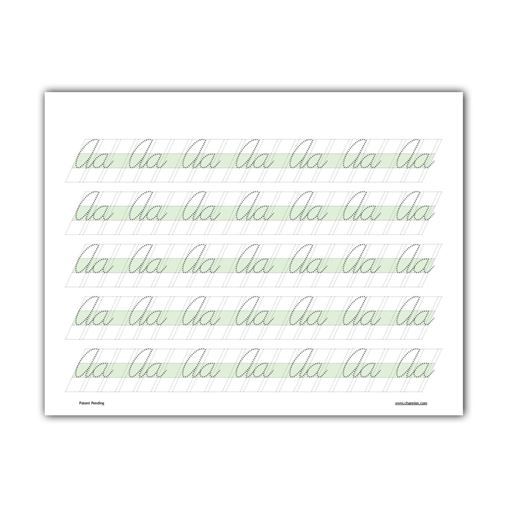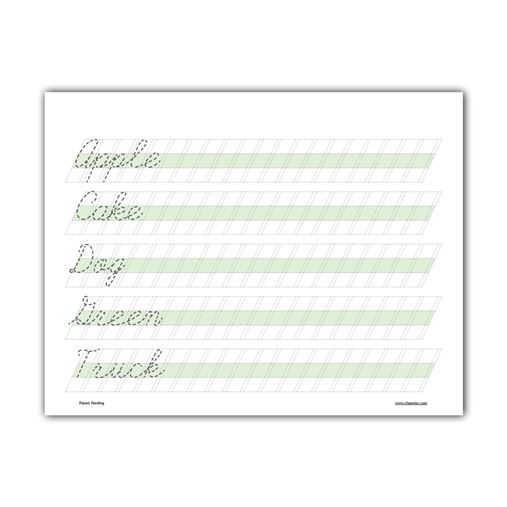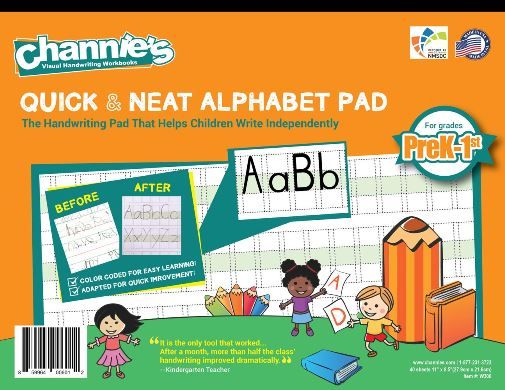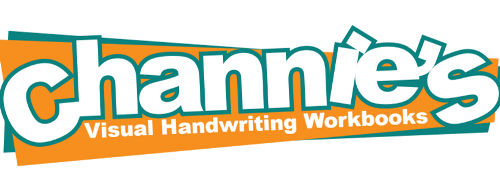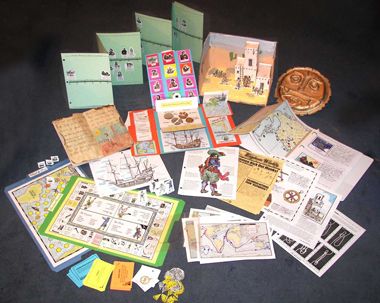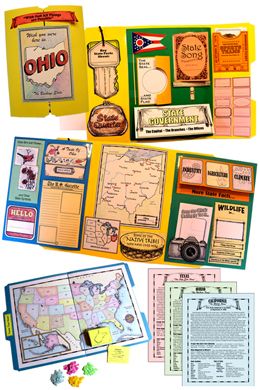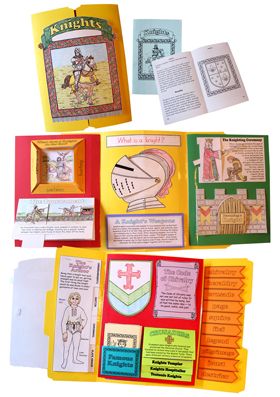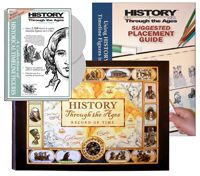Handwriting
March 07, 2018
When a Good Thing Gets Even Better {A CursiveLogic Review}
Have you been looking for a logical and effective program for teaching cursive to your child or an engaging way to brush up on handwriting yourself?
CursiveLogic can have you covered on both accounts with their the CursiveLogic Quick-Start Pack and The Art of Cursive coloring book.
I was first introduced to CursiveLogic a few years ago when my oldest child used their simple, successful, and logical program to better master cursive. I was pleased with his experience, and, therefore, delighted to hear about an opportunity to review the Quick-Start Pack and cursive coloring book as I knew my younger two children would benefit from them.
My youngest child has been dabbling in cursive, and the time seemed ripe for a stronger focus on it with him. So, we've spent the last six weeks or so using the CursiveLogic Quick-Start Pack, which includes:
First, I watched the video seminar, which took me less than an hour. Since I was already familiar with CursiveLogic, viewing the seminar was not filled with "ahhs" and "oohs" for me. However, it did offer me a worthwhile refresher on how and why CursiveLogic works. In the seminar, Linda offers tips and tricks on how to to maximize your success as a teacher and your student's success with handwriting. She also clearly explains the why behind each of her suggestions, truly offering concise and pointed insight into the CursiveLogic method.
Then, my youngest and I dove into the 112 page workbook, which, I noticed had been wonderfully improved from the original CursiveLogic workbook my oldest used. Among the improvements are:
The new workbook design maintains the simple, logical teaching approach of the original book and also keeps the smart, top spiral binding so students can simply flip pages to keep working on a flat surface and won't be flustered by bindings, whether left- or right-handed. It divides cursive learning up into 10 lessons:
Teaching Notes, 3 P's for Excellent Cursive, and more are also included.
To use the workbook, my son and I typically sat down together with me getting him started on a lesson portion and him completing lesson work for 10-15 minutes a time. Since we complete skill learning in short, targeted segments, we ignored the suggested pacing or Lesson/Day as noted in the book and just progressed at the speed each day brought us in our short sessions together. Thus, we have not completed even half of the program yet, but are making painless (though sometimes slow because my youngest tends to be a perfectionist with his cursive writing) progress.
He had this to say about his experience thus far:
My middle child - who is still gaining strength in cursive, enjoys adult coloring books and, immediately upon looking at what the The Art of Cursive's description online said, "I'll do that!" - was delighted when our cursive coloring book came in, and I said it was "all hers". I was equally pleased, because my daughter longs to accomplish skills-based work on her own, but, due to learning differences, often needs me for anything involving reading and writing. However, this cleverly designed book offered her independence, cursive practice, and - happily - fun!
I gave my daughter free reign to use the cursive coloring book whenever she wanted during our lesson times, and found she also sometimes used it during her free times. She had this to say about The Art of Cursive:
Why CursiveLogic Works
In our experience so far, the CursiveLogic workbook lends itself to cursive handwriting success because:
Likewise, the coloring book takes handwriting to the next level while also accessing the creative, artistic side of a child's or grown-up's brain, allowing stroke practice and creativity to merge. Moreover, the quotes chosen for the book are lovely - from saints, presidents, artists, inventors, and more. So, the book makes for perfect low-key, enjoyable copywork, too!
Without question, the CursiveLogic method is a well thought-out one that lives up to its name, by making learning how to write in cursive logical and simple. Begun as an effort to teach an adult student with learning disabilities how to write cursive with ease, CursiveLogic has developed into a series of tools that can help any student - young or old - succeed in writing script and, then, expand skills through enjoyable copywork and adult coloring.
Straightforward, intelligent and logically presented, the CursiveLogic Quick-Start Pack is a handwriting program I would recommend. Clever, fun, and filled with copywork and beautiful designs, the The Art of Cursive holds great appeal, too.
A Discount for You!
CursiveLogic has been kind enough to offer a discount just for Crew Review readers. From now through the end of March you can save 20% on the CursiveLogic Quick-Start Pack, which is the webinar + workbook combo by using the code CREW2018!

Do you know a child or grown up ready to learn cursive using a well-designed, logical approach? How about a child or grown up who wishes to brush up on cursive using a fun approach? Then,CursiveLogic could be perfect!
CursiveLogic can have you covered on both accounts with their the CursiveLogic Quick-Start Pack and The Art of Cursive coloring book.
I was first introduced to CursiveLogic a few years ago when my oldest child used their simple, successful, and logical program to better master cursive. I was pleased with his experience, and, therefore, delighted to hear about an opportunity to review the Quick-Start Pack and cursive coloring book as I knew my younger two children would benefit from them.
My youngest child has been dabbling in cursive, and the time seemed ripe for a stronger focus on it with him. So, we've spent the last six weeks or so using the CursiveLogic Quick-Start Pack, which includes:
- 6 month access to a CursiveLogic Online Seminar presented by Linda Shrewsbury
- a 112-page, consumable CursiveLogic workbook written directly to the student.
First, I watched the video seminar, which took me less than an hour. Since I was already familiar with CursiveLogic, viewing the seminar was not filled with "ahhs" and "oohs" for me. However, it did offer me a worthwhile refresher on how and why CursiveLogic works. In the seminar, Linda offers tips and tricks on how to to maximize your success as a teacher and your student's success with handwriting. She also clearly explains the why behind each of her suggestions, truly offering concise and pointed insight into the CursiveLogic method.
Then, my youngest and I dove into the 112 page workbook, which, I noticed had been wonderfully improved from the original CursiveLogic workbook my oldest used. Among the improvements are:
- larger fonts and new graphics in the introductory pages, which make the workbook even more user-friendly for children.
- new page ordering, which allows students to simply flip through the pages on one side of the book to complete lessons before flipping the book over to flip through the second half of lessons, which is handy as it prevents the need for constant flipping of the book every time a page is turned.
- color-coded corners, which help students remember which half of the workbook they are working on.
- large finger-writing practice pages so students can trace the stroke shapes with a finger easily, beginning to put them into muscle memory, before ever picking up a writing utensil
- new lesson notations that denote which pages of a lesson are for which days of it.
- more practice pages to help students get letters down.
The new workbook design maintains the simple, logical teaching approach of the original book and also keeps the smart, top spiral binding so students can simply flip pages to keep working on a flat surface and won't be flustered by bindings, whether left- or right-handed. It divides cursive learning up into 10 lessons:
- Orange Oval Letters
- Second Letter String
- Third Letter String
- Fourth Letter String
- Uppercase Letters
- More Uppercase Letters
- More Uppercase Letters
- More Uppercase Letters
- More Uppercase Letters
- More Uppercase Letters
Teaching Notes, 3 P's for Excellent Cursive, and more are also included.
To use the workbook, my son and I typically sat down together with me getting him started on a lesson portion and him completing lesson work for 10-15 minutes a time. Since we complete skill learning in short, targeted segments, we ignored the suggested pacing or Lesson/Day as noted in the book and just progressed at the speed each day brought us in our short sessions together. Thus, we have not completed even half of the program yet, but are making painless (though sometimes slow because my youngest tends to be a perfectionist with his cursive writing) progress.
He had this to say about his experience thus far:
I like Cursive Logic, because it is teaching me how to write beautiful, perfect cursive letters. At first, Mom taught me how to use it and now I use it mostly on my own with Mom nearby. I copy letters and then write below them. I chant "over-back trace-a, over- back trace-c,..." in my head and, sometimes out loud.
The book makes it easy to learn letters, because it gets them in my muscle memory. I don't like that I cannot write perfectly yet, so I erase a lot. I am getting better. I keep under the midline now and also don't have floating letters. When I write cursive, I have learned to slant - make running letters.
I want to keep using this until I learn all my letters very well. The book itself is easy because it lays flat and groups letters. It's learnable!
I gave my daughter free reign to use the cursive coloring book whenever she wanted during our lesson times, and found she also sometimes used it during her free times. She had this to say about The Art of Cursive:
The Art of Cursive is an adult coloring book. In the first few pages, you practice your cursive. Then, the rest of the book has quotes for cursive practice and coloring pages with tons of cursive letters in the pages.
I think the bird page, which is the very first coloring page is cool. It was actually harder to color in though than some of the other pages.
The coloring pages are a mix of abstract and more realistic designs. I daresay the most realistic is the dandelion page.
The book is great for lessons when you need a break between other lessons and it is a fun coloring book. I'm ten and I enjoy it. I think other kids and grown ups would enjoy it. My little brother wants to use it, so I am going to let him do the dragon page.
I like how the cover is partially colored, too. At first I thought the purple was water damage and then I realized, "No, it's actually meant to be like that. It is half colored in. It looks cooool!" The designers of this whole book must be creative!
Why CursiveLogic Works
- letters are grouped by shape into four basic "families" that are named alliteratively and make up the entire alphabet, which helps my son learn and remember more than one letter in the same sitting.
- similarly shaped letters are taught together, greatly simplifying the learning process for my son through logic.
- letters that share a common shape are strung together, which I have noted helps a child's muscle memory as much as his mental one.
- color-coding and "catch phrases" are used to help children remember the different shapes in multi-modal way (visual, kinesthetic, and auditory) - something that works for my son.
- real words are used straight from the first lesson, showing children they can write in cursive right away - a great motivator for my youngest who wants to do things like his big brother.
- there are repeated opportunities for students to trace, write and link words, making practice progressive and purposeful. (My son, at first, wanted to skip some of the practice and did. Quickly, though, he realized the value of the practice and returned to complete whatever he had skipped.)
- top spiral binding, well-sized tracing fonts and plenty of space on the bank writing lines make the workbook user-friendly.
Likewise, the coloring book takes handwriting to the next level while also accessing the creative, artistic side of a child's or grown-up's brain, allowing stroke practice and creativity to merge. Moreover, the quotes chosen for the book are lovely - from saints, presidents, artists, inventors, and more. So, the book makes for perfect low-key, enjoyable copywork, too!
Without question, the CursiveLogic method is a well thought-out one that lives up to its name, by making learning how to write in cursive logical and simple. Begun as an effort to teach an adult student with learning disabilities how to write cursive with ease, CursiveLogic has developed into a series of tools that can help any student - young or old - succeed in writing script and, then, expand skills through enjoyable copywork and adult coloring.
Straightforward, intelligent and logically presented, the CursiveLogic Quick-Start Pack is a handwriting program I would recommend. Clever, fun, and filled with copywork and beautiful designs, the The Art of Cursive holds great appeal, too.
A Discount for You!
CursiveLogic has been kind enough to offer a discount just for Crew Review readers. From now through the end of March you can save 20% on the CursiveLogic Quick-Start Pack, which is the webinar + workbook combo by using the code CREW2018!
Purchase CursiveLogic Quick-Start Pack for $49 and The Art of Cursive for $15.95.















